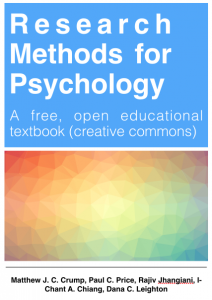Revisions
Open texts can always be improved upon and upgraded after their initial release. The following outlines the ways you can gather feedback to improve your open text.
Think about how you will process feedback. The treatment for each item will depend on what has been reported: an error, new information, a potential resource to add, or a suggestion on the structure of the text. It is also good practice to respond to recommendations by thanking your colleague for taking the time to write to you. If you have information about how to use your textbook or ideas about supplementary materials, include these in your response.
Feedback/Contact Page
You can provide your contact information such as an email or create a feedback page to be added to the front matter or back matter section of the text. This feedback page should contain details about the kind of feedback you’re looking for and how the reader can submit comments. If the text is housed in an online platform that doesn’t use page numbers, it can be difficult for readers to clearly describe what section of the text they want to comment on. In your call for feedback, encourage readers to be as specific as possible in their description of the location of their comments. Alternatively, some online platforms have a comments feature that can be enabled. Another option would be to use an external (and open source) annotation system, such as Hypothes.is, which allows users to leave comments directly on a web page.
Examples – Hypothes.is for Open Textbook Feedback
The Research Methods for Psychology – Brooklyn College Edition by Paul C. Price, Rajiv Jhangiani, I-Chant A. Chiang, Dana C. Leighton, & Matthew J. C. Crump is developed with open review practices in place. Using Hypothes.is, participants can create a free account and review the content of the text and provide feedback and edits to improve the resource.
Research Methods for Psychology – Brooklyn College Edition by Paul C. Price, Rajiv Jhangiani, I-Chant A. Chiang, Dana C. Leighton, & Matthew J. C. Crump is developed with open review practices in place. Using Hypothes.is, participants can create a free account and review the content of the text and provide feedback and edits to improve the resource.
To learn more about using Hypothes.is in Pressbooks, go to Using Hypothes.is in Pressbooks.
Text Reviews
Another way to collect feedback on your textbook is to give instructors the opportunity to submit a review of your text. Text reviews are an important way to not only provide feedback on its improvement for the writer but also a way for others interested in adopting the text to see recommendations by a neutral expert. There are a number of textbook review processes that have been developed by open text publishers. A few examples include BCcampus and Open Ed Manitoba. The base level criteria for a review includes faculty who have expertise in the subject area and have taught content included in the specific textbook.
Examples – Open Textbook Review
Chemistry (OpenStax) by Paul Flowers, Klaus Theopold, and Richard Langley shows a review at the bottom of the landing page. The review page provides an application process to become a peer reviewer of the text, including providing an outline of the review process.
Errors
Regardless of how carefully a book is copy-edited and proofread, it may contain errors after publication. Your job is to create a system that allows readers to report errors to you and develop a means to correct these errors. A feedback form that invites error reporting might be sufficient for you, or you can just provide an email where people can contact you.
Think about who will make the corrections. This can be you or someone else, like a student assistant or copy editor. This will often depend on who has access to the book’s source files after publication. Also, how often will corrections be made? Will you fix them immediately? Monthly? Quarterly? And how will you respond to the individual reporting the mistake? A simple thank you with a description of how and when the error will be addressed is one way.
Develop a means to track and record corrected errors for your readers’ reference. You can use an erratum that is added to your book. Or, like BCcampus, record adjustments on a versioning history page. If there is more than one format or file type for which the text is available, remember to update these and note the date on the erratum or versioning history page.
In the classroom, several authors have found success by offering “bug bounties” to their students: a reward system where instructors offer rewards to students for finding errors which had not already been found in the text.
Examples – Errata and Bug Bounties Error Review Processes
Errata List for an Open Textbook
Astronomy (2016) by Andrew Fraknoi, David Morrison, Sidney C. Wolff. Houston, Texas.
Bug Bounties
Media Attributions
- Research Methods for Psychology Book Cover © Matthew J. C. Crump, Paul C. Price, Rajiv Jhangiani, I-Chant A. Chiang, Dana C. Leighton is licensed under a CC BY-NC-SA (Attribution NonCommercial ShareAlike) license
a record of errors and their corrections for a book or other publication

